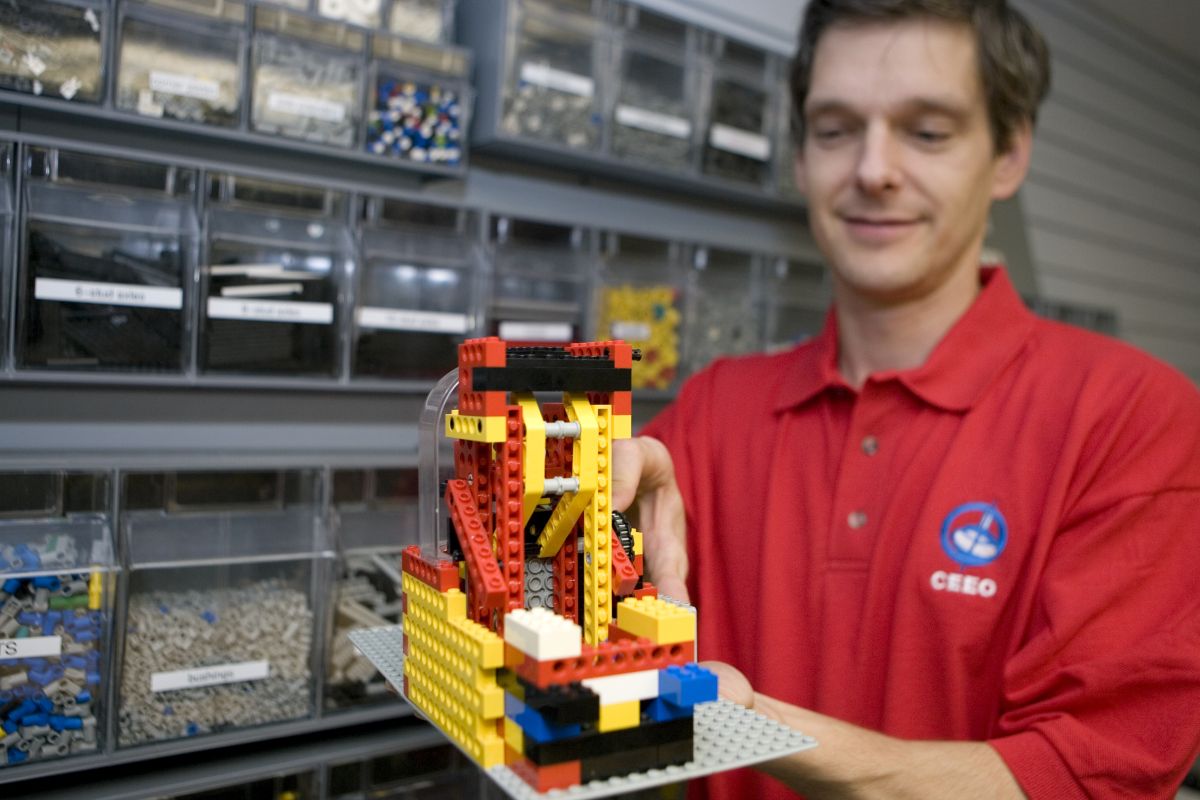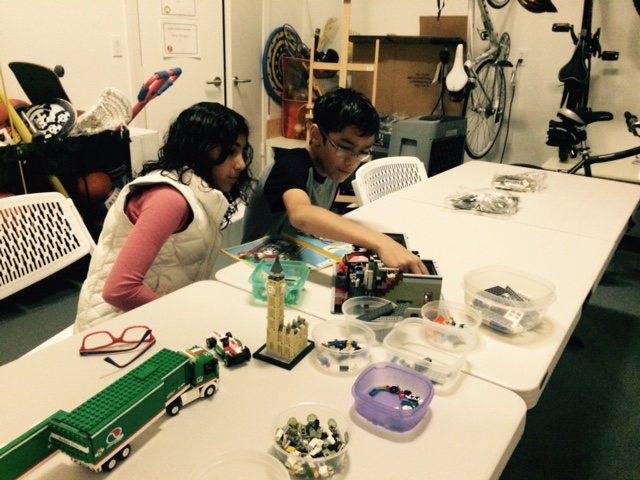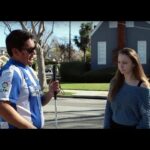Do enjoy this piece, previously published here on talkSTEM in Feb, 2015.
How will you help your kids be ENGAGED with creating, learning, thinking about STEM or STEAM this summer?
A Conversation with Parent, Engineer, and Educator, Chris Rogers
(part 1 of a series of 3 pieces).

Recently I had a conversation with Chris Rogers about learning both at home and in school. We spoke on all sorts of things to do with learning in general and learning STEM in particular. Parents, as their child’s first and most important teacher, will be interested in Chris’ work with teachers as well as his own memories of parenting experiences. As parents, we certainly have a multitude of teachable moments and it’s nice to have a repertoire of teaching stories to draw from, when the opportunity presents itself.
Chris Rogers is a man who wears multiple hats, as Professor in Mechanical Engineering; co-developer of Robolab and NXT software for Lego Mindstorms kits; Director of the Center for Engineering Education and Outreach at Tufts University; and parent of three, to name a few. His kids are currently ages 19, 22 and 23. The 19-year old is a sophomore in college (psychology major); the 22-year old is a senior in college (psychology with a certificate in graphic design); and the 23-year old is out in California trying to break into journalism (film major in college). Chris recalls enjoying a great deal of building activities when the kids were younger and having conversations at the dinner table about all sorts of things, from ethics to science. The family also instituted “Rogers School” when the kids were young, where every Sunday for an hour they did science experiments as a family. Finally, Chris remembers that they had the internet router on a timer (for the whole family), which helped manage the family’s time together.
Chris has always related his role as parent to his teaching and work life. As a parent, you know when you’ve pushed your kids too far and you pull back. At the same time, you know that if you don’t do anything then they’re not going to put their seat belt on or whatever you’re trying to teach them to do. So constantly working at getting the balance right for each child is a key goal. There is no magic formula, which means that as parents and teachers, we keep experimenting and learning.
We all strive for the right balance in many segments of our lives so why should learning and teaching STEM (or any subject) be different? Chris asks the question of whether it is more important that kids can discuss what gravity is or that they can parrot back Newton’s laws. Both approaches are valid. The greater question is what is the mixture and balance between the two that we want? How much do we ask kids to discuss based on their own understandings or experiences (of gravity, of osmosis, of the Revolutionary War, of whatever topic…) versus how much they can communicate clearly the general consensus on these topics.
Some teachers tell Chris and his team that their best teaching days are when they give kids the project goal and necessary information, leave the classroom and come back an hour later. They find it amazing where the kids have gone with it. On the other hand, some teachers can’t handle this free form approach. Then there are some kids – you leave them and they don’t do anything! His team’s task is to “try to get teachers to see all of this and start analyzing themselves and start to think – should I have made that suggestion? Did I go too far?” There is not a single effective answer or strategy that works for all children, which parents of more than one child know only too well!
Story was a big theme in our conversation. English teachers, Chris suggested, are all about getting stories out of kids; in other words, interpretations of texts or finding evidence to support a story. Kids in English class need to argue their story and we all tend to agree that is a productive thing to do. What about in Science or in STEM contexts? What do parents and teachers expect in terms of children and their stories? Children, teachers, parents, museum educators, etc. all need to create and tell their stories. Chris’ group uses some very cool tools that help kids make a model of their stories, plus provide a chance to see other people’s stories. These tools include making stop action movies and using infrared cameras.
The more we help kids author their STEM stories, the more engaged the kids tend to be. So, balance + story = engagement. That’s the ultimate goal – engagement, whether it’s at the dinner table, in the classroom, on the sports field, or wherever!
My kids enjoy building with lego bricks , especially over summers when they have larger chunks of time. In fact, we transformed our smaller garage into a project space – currently used largely for building with lego bricks.

I needed to hear Chris’ opinion on how story and engagement relates, in his mind, to the world of building with lego bricks. Building using lego bricks (i.e. following directions using the manual that comes with the kit), to him, is experiencing somebody else’s story, which in turn will influence the child’s story – one that they invent on their own later. Further, Chris pointed out that there are simple ways that you or I, as a parent or teacher, can add to the child’s lego-building experience by adding some simple challenges after the build — can you add a room to the house, can you add two legs to the machine, can you find a way to get the building to be taller, etc. What a great and yet simple way to add a creative element to the child’s experience! It’s hard to believe that my kids are almost teens and I’d never thought of this!
Here is Chris’ perspective (in his words) on teaching goals (and remember that all parents are also teachers!).
Note: my caps inserted below to highlight key concepts.
One goal of teaching is to get MY STORY into your head (by telling it to you and/or showing it to you). A second goal of teaching is to enable you, the student, to create YOUR STORY and argue (student-teacher/parent, student-student) until you arrive at a version that incorporates your experiences and understandings as well as classroom (or wherever your learning episode is happening) experiences. When you teach, you inherently BALANCE these two goals – how much should you tell them, how much should you let them discover, how much should you show them by giving them instructions / lab procedures. Unfortunately, when teachers feel like their plate is too full (and I will add here, parents too, because I know that after school, while the kids are doing homework and I’m coordinating pickups, drop-offs at various activities, and dinner, I easily fall into this category), the enabling piece disappears and the telling piece takes over because it’s much faster to tell. However, the problem with telling is that then the kid doesn’t fundamentally ENGAGE with the material so I would claim that they never really learned it. There’s a fair amount of evidence out there that memorization doesn’t last that long. Flashcards last about 24 hours, I think, the studies show.
Engagement is the central issue in learning, and we are learning most of our waking hours! If we get students to engage with the material — to grapple with concepts, procedures and their connections to their own lives — then we have a great chance of having the student learn the material.
- Hear Chris speak about learning STEM in the classroom.
- View and Share lego creations using WeDo and Mindstorms.

